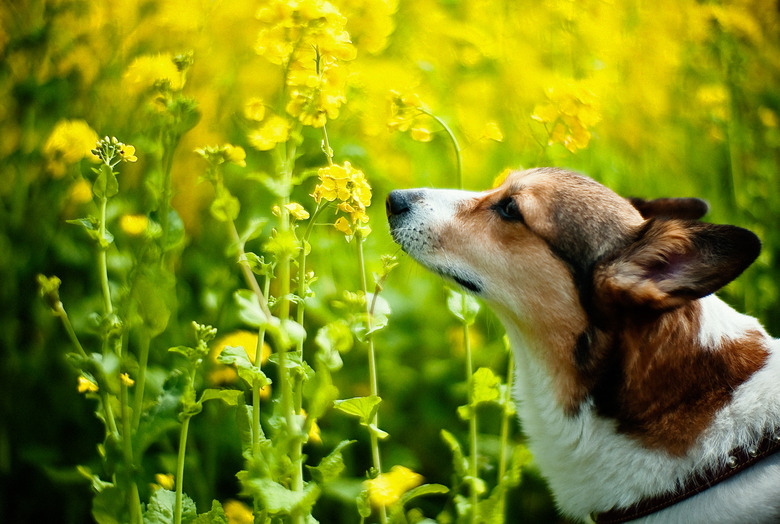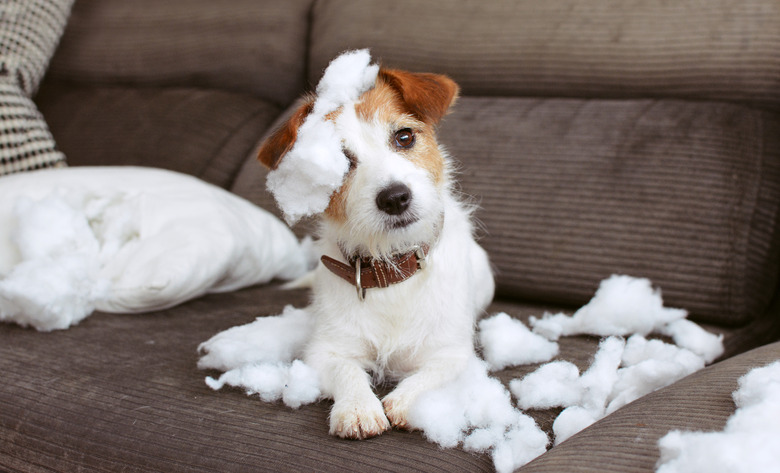How To Introduce Your Dog To A New Home
As we all know, moving is a stressful time, and it can be as stressful for your furry family member as it is for you. Make sure you take time to get your pup comfortable with its new surroundings so that your dog will love your new home just as much as you do. How do you introduce a dog to a new home? In stages. Here are some key steps to take to make sure that your dog adjusts successfully to your new home: visit, tour, and, ultimately, be patient.
Visit your new neighborhood before you move in
Visit your new neighborhood before you move in
You might not realize it, but your dog becomes very familiar with his home turf. Dogs are hyper-aware of all of their local smells, sounds, and other details around your house. It's the reason that dogs have been known to find their way home from a long distance away.
You can help your pup adjust to a new environment by making his future neighborhood feel familiar before you make a massive change. Take him to the area outside your new neighborhood and walk him around for the first time. If you can, bring your dog inside the new house. The move will feel more like returning to somewhere familiar and safe place, rather than going to a completely new place.
Tour a new home with your dog
Tour a new home with your dog
Bringing your dog inside and letting them sniff around a bit before it becomes his new home might also help him feel more comfortable. This probably isn't advisable if there are still strangers living there, if the current occupants have their own pets, or if your pup tends to have accidents inside.
If showing him around isn't possible before you move in, make sure you do as soon as you get there. Keep him on their leash and walk him through the house. Let him sniff everything and make sure he gets a solid exploration of the place. Having you there for his first tour will help comfort him and keep them out of trouble as he start to adjust. The next time your dog goes to the new house, he'll recognize the familiar scents of his first visit with you.
Bring your dog's favorite toys
Bring your dog's favorite toys
Obviously, when you move, you usually bring along all your dog's favorite doggie things. But as soon as possible, start unpacking the dog bed, water bowls, and favorite toys so your pup can settle in and feel comfortable in his new space. It can help a dog feel more comfortable with some of their familiar smells around.
You can make the new environment even more enticing with some special treats or playtime with your pup. Offering a reward helps teach your dog's brain to create positive associations with something, and you want to create positive associations with the new space. Some pros, including the ASPCA and VCA Hospitals also recommend limiting your dog to a single room at first, so he can become comfortable and establish his territory. As your pup gets comfortable, slowly allow him to explore more and more, so he doesn't get overwhelmed and gets comfortable in his new digs.
Secure the backyard for your dog
Secure the backyard for your dog
A recent study found that the millennial generation is house hunting in large part for their dogs, and one of the number one items on their list is outdoor space, for their treasured pup to run around. It makes sense, of course, because it's both convenient and considerate to give our pups a place where they can have free rein to run around, sniff and do their business. If you're lucky enough to find a home with a fenced in yard, however, you'll want to check a few things before letting them roam around.
If your dog has never had a yard before, then you might not know if or how he could escape. Carefully check the entire perimeter of your fence for anything that looks like a hole, a gap, or a place where an animal may have climbed in or out of. This includes behind or under any large plants and shrubs.
- Let your dog out but keep an eye on them outside for awhile before letting them roam freely. Both you and your pup will need time to establish boundaries.
- If you notice any escape attempts, like jumping, digging, or chewing, take immediate measures to stop the behavior. You don't want escape attempts to become the habit.
- Make sure the yard is a happy place. Play with toys, incorporate some treats (maybe a stuffed Kong to make them really happy), and spend time with your pup, so they enjoy being outside.
- Take note of your surroundings. Is there wildlife around? Other dogs? Outdoor cats that might come for a visit. Observe your area carefully, so you know how to anticipate things that might not let your dog settle down.
Check the plants around the house
Check the plants around the house
The ASPCA has an excellent database of plants that can be harmful to pets, and many of the organization's entries have pictures, so those new to gardening can identify them. Obviously you know best whether your dog is likely to try and eat the various plants in your new yard, but it's best to err on the safe side and remove anything particularly toxic. Some of the most common poisonous plants include the sago palm, azaleas, aloe, and tulips.
Update your dog's contacts
Update your dog's contacts
Since you'll most likely know your new address ahead of time, update your dog's ID tags with your new address and phone number. If your dog has a microchip, update your address and phone number in the registry. This will give you extra peace of mind in case something does go wrong and your precious pooch gets lost in his new neighborhood.
Be patient with your dog
Be patient with your dog
Moving day to a new home and getting used to a new daily routine take time, even for a well-adjusted dog. After a move, your dog's anxiety may spike. You may notice your dog misbehaving, including chewing, acting out, or going potty in the house.
Try not to get upset with them and instead focus on positive reinforcement to help them accept their new surroundings as a safe space. Establishing new routines and getting comfortable can take time and effort, but you and your pup will both reap the benefits of loving a new home that you create and snuggle in together.
References
- Time: The Amazing Science Behind Pets That Find Their Way Home
- VCA Hospitals: Moving With Your Dog
- VCA Hospitals: Using Reinforcement and Rewards to Train Your Pet
- AKC: How to Help Prevent Your Dog From Escaping the Yard
- ASPCA: Poisonous Plants
- Central California SPCA: The 16 Most Common Poisonous Plants for Dogs

